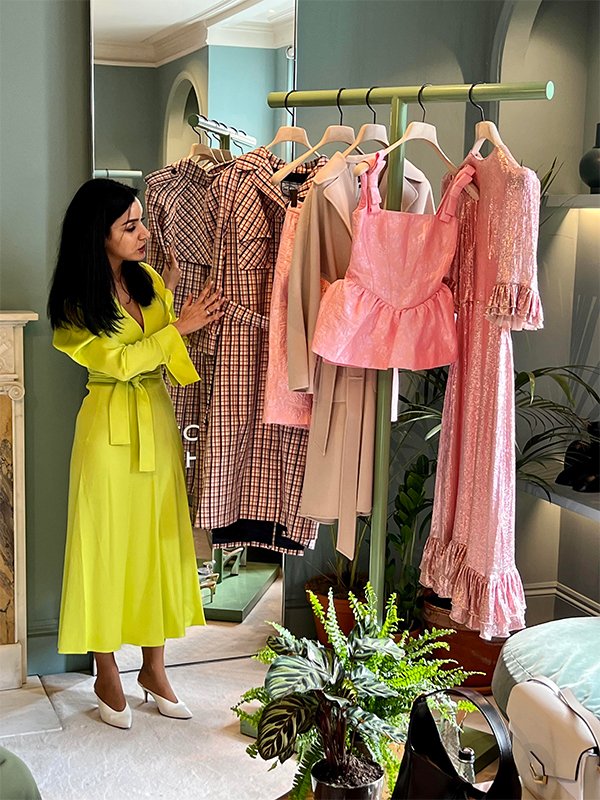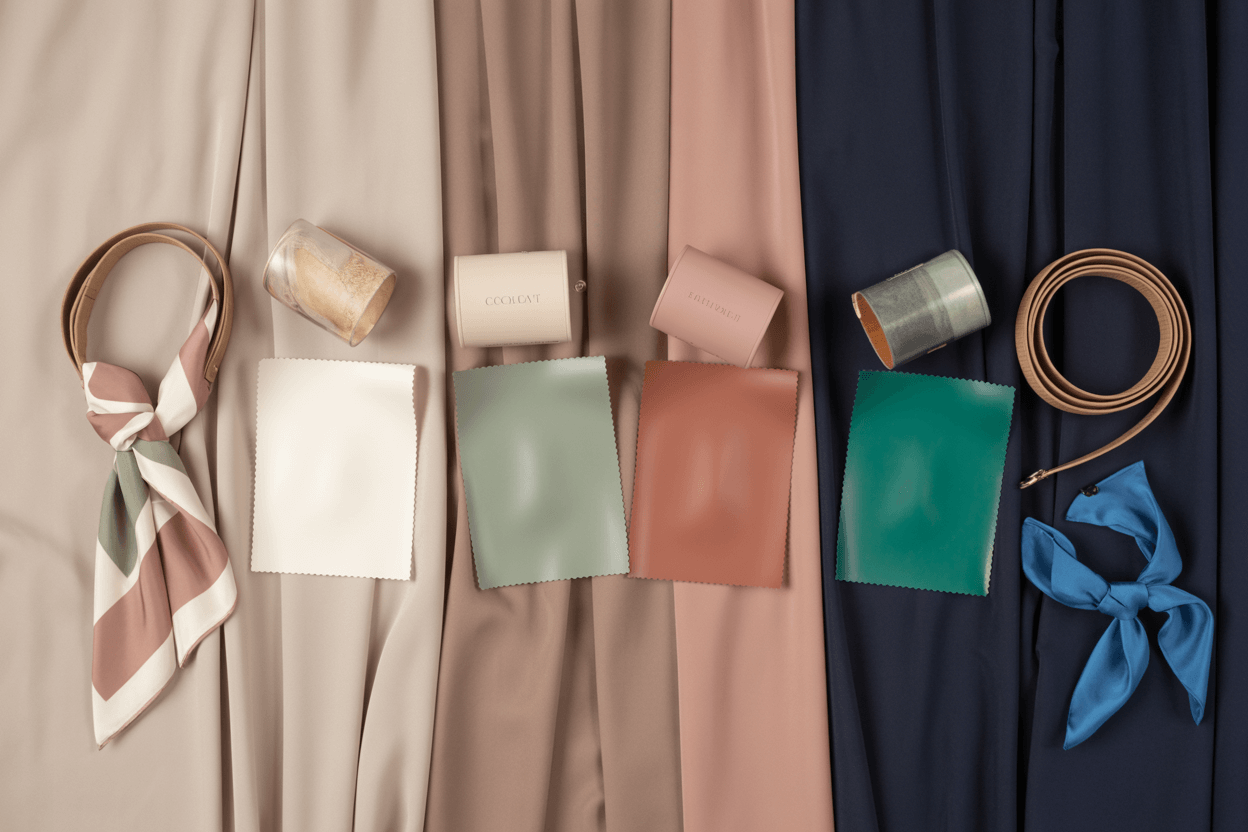Have you ever noticed how putting on your favourite outfit instantly lifts your mood? It turns out there’s solid psychological research behind this. The clothes we wear have a powerful impact on our mental health, emotional state, and how we perceive ourselves.
This isn’t just fashion folklore—it’s backed by fascinating psychological research that reveals the clothes we wear profoundly influence our emotions, cognitive processes, and self-perception in ways most of us never consciously realise. ✨
The relationship between our wardrobes and our mental well-being goes far deeper than simple aesthetics. What we wear functions as both a reflection of our inner emotional state and a powerful tool that can actively shape how we feel and perform. Let’s explore this fascinating psychological phenomenon and discover how your wardrobe choices might be affecting your emotional health more than you think.
The Science of Enclothed Cognition
Research in the emerging field of “enclothed cognition” has demonstrated that clothing doesn’t just affect how others perceive us—it fundamentally alters how we perceive ourselves and how our brains function.
In a groundbreaking study at Northwestern University, researchers found that simply wearing a lab coat described as a “doctor’s coat” improved participants’ attention and performance on cognitive tasks. When the exact same coat was described as a “painter’s coat,” this effect disappeared completely.
What does this tell us? The symbolic meaning we attach to our clothes directly influences our psychological processes and capabilities. This isn’t about superficial appearance—it’s about how clothing shapes our internal experience.
What is Dopamine Dressing? How Clothes Can Boost Your Mood
The concept of “dopamine dressing”—wearing clothes specifically to boost your mood—has gained significant attention in recent years.
When we wear clothing that brings us joy, our brains release dopamine, a neurotransmitter associated with pleasure and satisfaction. This biochemical response creates a genuine mood elevation that can:
- Reduce symptoms of anxiety and depression
- Increase confidence in social interactions
- Boost creative thinking and problem-solving abilities
- Enhance overall emotional resilience
Your wardrobe isn’t just fabric—it’s a potential pharmacy of mood-enhancing tools when approached with intention and self-awareness.
Clothing as Emotional Armour and How Clothes Affect Mental Health
For many of us, specific garments serve as emotional armour against the world’s challenges. This protective function plays a vital role in our psychological well-being, especially during periods of vulnerability.
Comfort Clothes: Why Certain Outfits Reduce Stress
Most of us have “comfort pieces”—those reliable garments we instinctively reach for when feeling emotionally vulnerable. These items provide more than physical comfort; they offer psychological security during challenging times.
Research shows that these comfort pieces trigger the parasympathetic nervous system, helping reduce stress hormones and create a sense of safety. This isn’t sentimental—it’s a measurable physiological response that can help regulate emotional states.
Whether it’s a perfectly worn-in jumper, a pair of jeans that fit just right, or a treasured piece of jewellery, these comfort anchors deserve recognition as legitimate self-care tools rather than mere fashion choices.
The Psychology of Power Dressing – Clothes And Confidence
At the other end of the spectrum, “power dressing” serves as proactive emotional armour, helping us project confidence to both others and ourselves.
A 2015 study found that participants wearing formal business attire demonstrated enhanced abstract thinking and negotiation skills compared to those in casual clothes. The structure and symbolism of professional attire actually altered cognitive processing, creating a measurable “power effect.”
This explains why many people instinctively “dress up” for important virtual meetings even when only visible from the shoulders up—the psychological effect of the complete outfit influences performance regardless of visibility.
How Clothes Affect Self-Identity and Mental Health
Perhaps the most profound impact of clothing on mental health relates to identity expression and authenticity. When our external presentation aligns with our internal self-concept, we experience greater psychological harmony.
Clothing-Identity Congruence
When what we wear accurately expresses who we feel we are, we experience what psychologists call “clothing-identity congruence”—a powerful state of psychological alignment that promotes well-being.
Conversely, when forced to wear clothing that conflicts with our self-perception—whether due to workplace dress codes, financial limitations, or social pressure—we can experience “clothing-identity dissonance,” which research links to:
- Increased anxiety levels
- Reduced confidence
- Heightened self-consciousness
- Diminished performance and focus
This explains why finding your authentic personal style isn’t merely aesthetic preference—it’s a significant mental health consideration.
The Transformative Power of Style Evolution
Our clothing choices naturally evolve as we navigate different life stages and role transitions. This evolution can either support or hinder our adaptation to new identities.
Research in occupational psychology shows that thoughtful wardrobe evolution during significant life transitions can significantly reduce anxiety and enhance adaptation to new roles—whether becoming a parent, changing careers, or entering retirement.
Your wardrobe should grow with you, providing continuity of identity while accommodating your evolving self. This balance between consistency and adaptation is crucial for maintaining emotional stability through life’s inevitable changes.
The Social-Emotional Impact of Clothing
Beyond our individual experience, clothing mediates our social interactions in ways that profoundly affect emotional well-being.
The Belonging Paradox
Humans have competing needs for both belonging and individuality. Our clothing choices navigate this delicate balance, signalling both group affiliation and personal identity.
Research on workplace attire shows that employees who feel their clothing appropriately balance professional expectations with personal expression report significantly higher job satisfaction and lower anxiety levels. This “belonging paradox” resolution through thoughtful dressing contributes significantly to emotional well-being in professional contexts.
This explains why many forward-thinking companies have moved away from rigid dress codes toward guidelines that allow for more authentic self-expression while maintaining professional standards.
The Judgment Shield: How Clothing Affects Mental Health
In social settings, appropriate attire functions as a “judgment shield,” reducing anxiety about social evaluation and allowing more authentic engagement.
A fascinating study on “social anxiety and clothing concern” revealed that when participants felt appropriately dressed for an event, they demonstrated reduced physiological markers of social anxiety and engaged more authentically in conversations.
This protective function demonstrates how thoughtful wardrobe planning can serve as a practical tool for managing social anxiety and enhancing interpersonal connections.
The Mind-Body Clothing Connection
The physical sensations created by our clothing directly influence our emotional states in ways most of us rarely consider.
Sensory Processing and Mood
Fabric textures, garment weight, and fit all create sensory inputs that our brains process alongside emotional information. These physical sensations can either enhance or detract from emotional well-being.
For individuals with sensory processing sensitivity (approximately 15-20% of the population), clothing comfort isn’t a preference—it’s a fundamental mental health consideration. Uncomfortable clothing can trigger genuine distress that impairs cognitive function and emotional regulation.
Even for those without heightened sensitivity, uncomfortable clothing diverts cognitive resources from other tasks, creating what psychologists call “attentional pull” that can deplete mental energy throughout the day.
The Embodied Cognition Effect
Beyond comfort, how clothing physically influences our posture and movement directly affect emotional states through what researchers call “embodied cognition.”
Restrictive clothing that alters natural movement or posture can unconsciously trigger stress responses, while well-fitted garments that support confident posture can enhance positive emotional states.
The physical “feel” of your clothing doesn’t just affect comfort—it shapes your emotional experience throughout the day through this embodied cognition mechanism.
How to Build a Wardrobe That Supports Mental Health
Given these profound psychological effects, how can we develop wardrobes that positively contribute to our mental and emotional well-being?
The Mindful Wardrobe Assessment
The first step toward a mentally healthy wardrobe is conducting a mindful assessment of your current clothing collection.
For each garment, consider:
- How does this item make me feel when I wear it?
- Does it physically comfort or distress me?
- Does it authentically express who I am?
- Does it serve my current life roles and activities?
- Does it carry positive or negative emotional associations?
This assessment often reveals surprising emotional patterns that can guide more intentional wardrobe development.
The Emotional Capsule Wardrobe
Beyond the practical benefits of a capsule wardrobe, this approach can serve profound emotional needs when developed with psychological awareness.
An emotional capsule wardrobe might include:
- Foundation pieces that provide consistent comfort and confidence
- Strategic “power pieces” for challenging situations
- Authentic self-expression pieces that reinforce identity
- Adaptable items that accommodate emotional fluctuations
- Comfort anchors for vulnerable moments
Rather than focusing solely on versatility and coordination, this approach prioritises emotional functionality alongside practical considerations.
Strategic Colour Psychology
Colour psychology offers another dimension for developing an emotionally supportive wardrobe. While individual colour associations vary, research shows consistent patterns in how certain hues affect mood.
Integrating colours that positively impact your specific emotional needs can transform your wardrobe into a powerful mood management tool. This strategic approach goes beyond simply wearing “happy colours” to addressing your unique psychological patterns.
For example, someone prone to anxiety might benefit from the grounding qualities of earth tones, while someone battling low energy might find the strategic use of brighter hues helpful for energy regulation.
The Professional Guidance Advantage
While self-assessment can reveal important insights, professional styling services offer unique advantages for developing a mentally healthy wardrobe.
The Objective Perspective Benefit
Even the most self-aware individuals have blind spots regarding their appearance and style. A professioal stylist provides an objective perspective that can:
- Identify unconscious patterns in your wardrobe choices
- Recognise disconnects between intention and effect
- Suggest alternatives you might never consider
- Provide evidence-based guidance on what truly flatters you
This objective input often resolves long-standing wardrobe frustrations that contribute to negative emotional patterns.
The Expertise Efficiency Factor
Professional stylists bring specialised knowledge that transforms the often overwhelming process of wardrobe development into an efficient, enjoyable experience.
At Deni Kiro Style, our approach to personal styling integrates psychological awareness with fashion expertise. Our Body Shape & Colour Analysis provides a comprehensive framework for understanding how specific garments will affect both your appearance and your emotional experience.
The Transformative Power of Wardrobe Evolution
A thoughtfully evolved wardrobe can be genuinely transformative for mental health and self-perception. Rather than viewing style development as superficial, recognise it as a legitimate form of self-care with measurable psychological benefits.
From Reactive to Intentional Dressing
Many of us dress reactively—responding to immediate practical needs, social pressures, or emotional impulses without a broader awareness of how these choices affect us.
Shifting from reactive to intentional dressing creates a profound change in how clothing influences your emotional life. This intentionality transforms your wardrobe from a potential source of stress to a reliable resource for emotional well-being.
The Identity Affirmation Cycle
When your wardrobe authentically expresses who you are, it creates what psychologists call an “identity affirmation cycle”—a positive feedback loop between self-perception and external presentation.
This cycle strengthens your sense of self and provides emotional resilience during challenging times. Rather than feeling like an “imposter” in your own clothes, you experience the confidence from authentic self-expression.
Conclusion: Your Wardrobe, Your Wellbeing
Your clothes are far more than fabric and fashion—they’re active participants in your mental health and emotional well-being. By approaching your wardrobe with psychological awareness, you can transform your clothing choices from potential stressors into powerful tools for emotional regulation, identity expression, and psychological comfort.
Ready to develop a wardrobe that genuinely supports your emotional well-being? Our personalised Style DNA: Find Your Fashion Personality, Body Shape & Colour service provides a comprehensive framework for understanding your unique body architecture, colouring, and style personality.
Book your complimentary initial consultation today to begin your journey toward a mentally healthy wardrobe that genuinely supports your well-being and authentic self-expression.
Are you ready to transform your relationship with your wardrobe and discover how intentional styling can enhance your emotional wellbeing? The perfect wardrobe isn’t about following trends—it’s about creating harmony between your inner and outer selves. ✨









